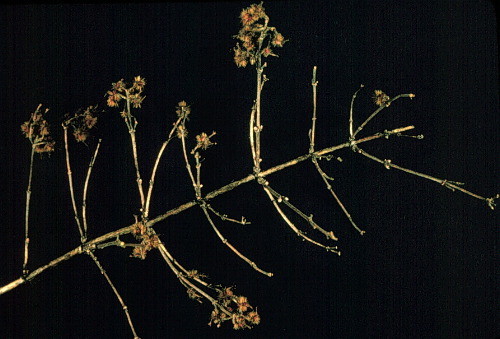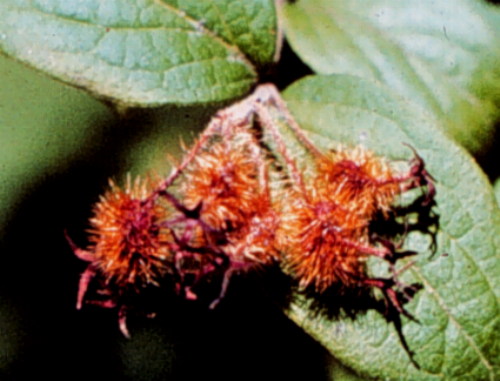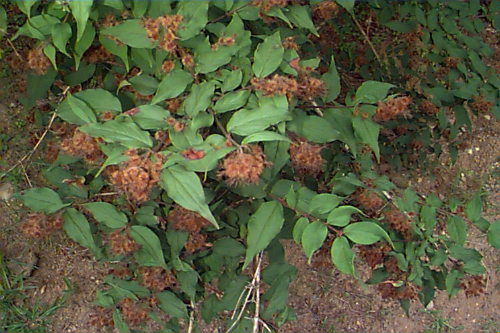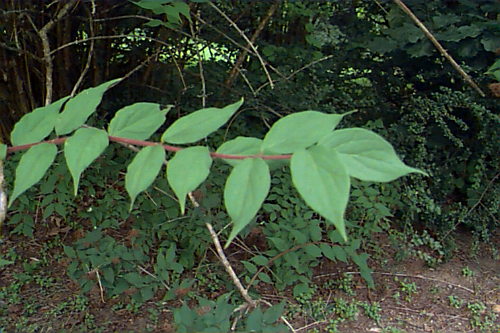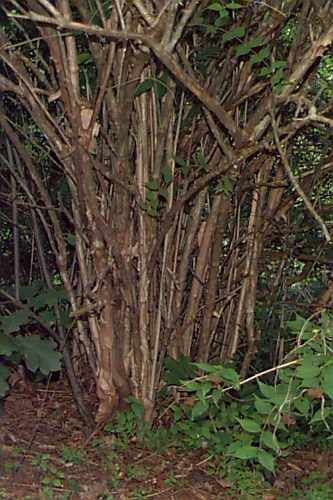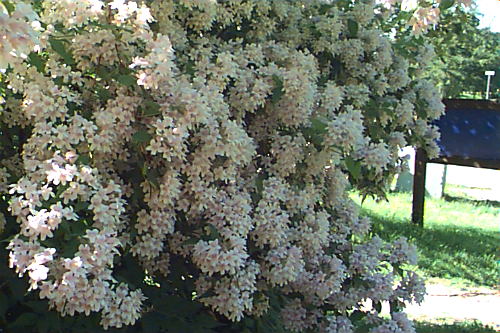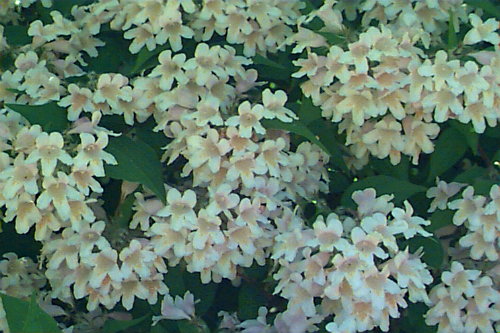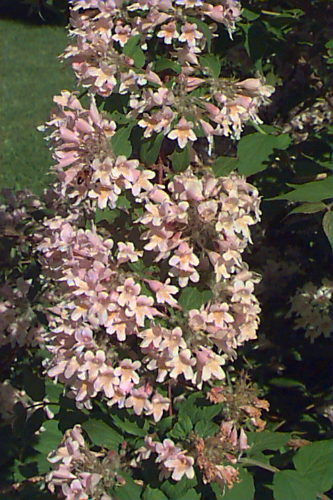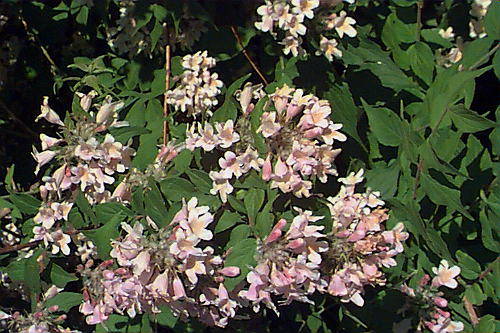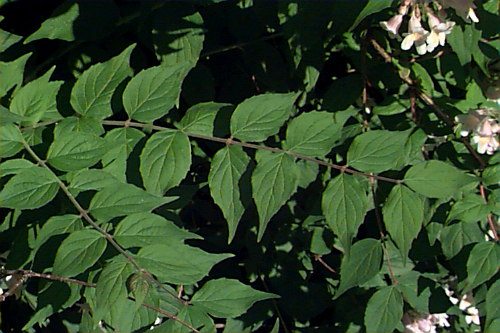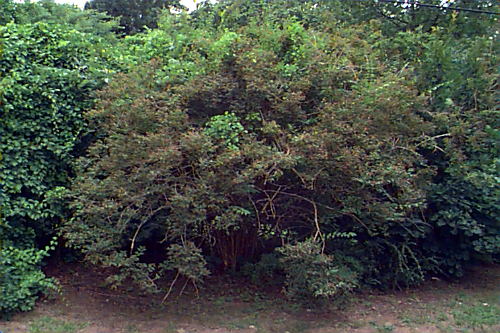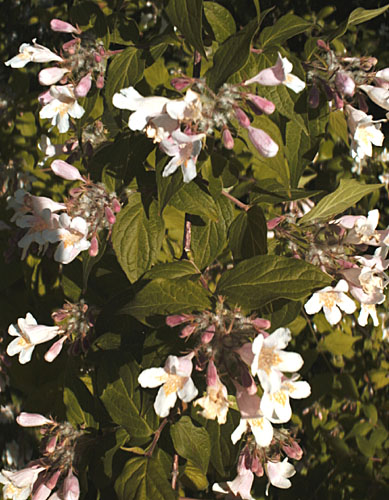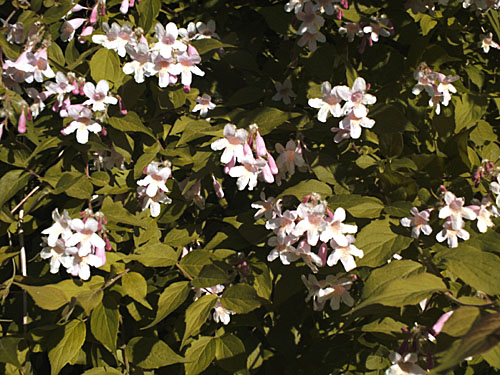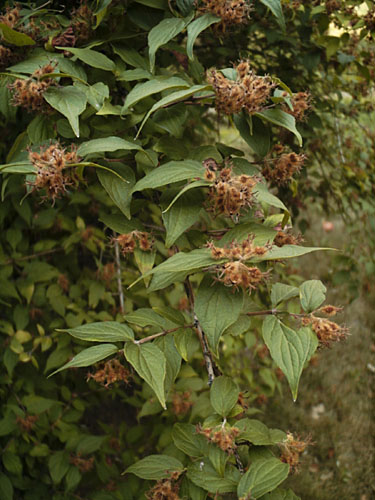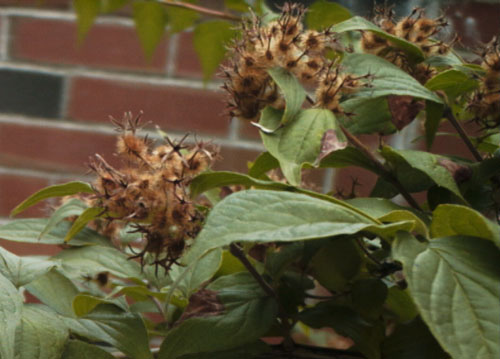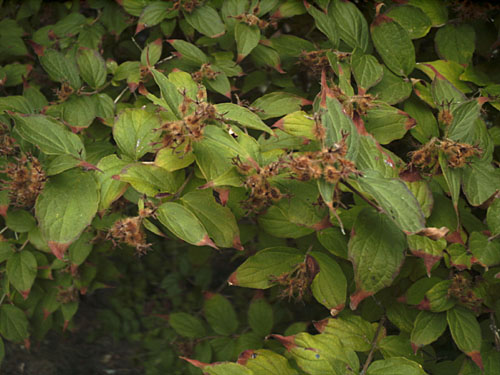Kolkwitzia amabilis
Beautybush
Caprifoliaceae
ExpandHabitat
- native to central China
- hardy to zone 4
Habit and Form
- large deciduous shrub
- upright arching habit
- multistemmed fountain shape
- 6-10 ft. tall and wide
- becomes leggy at base with age
Summer Foliage
- opposite
- up to 3" long
- broad ovate
- acuminate tip
- dark green leaf color
- few teeth on margin
- pubescent
Autumn Foliage
- slightly reddish to yellow
Flowers
- bell shaped with flaring mouth
- pink with yellow throat
- appear in May
- 0.5" long and wide
- borne in clusters along stems
- showy
Fruit
- bristly capsule
- ovoid, 0.25" long
- persists in winter
- capsule splits to release seeds
Bark
- light gray-brown
- peals on older stems
Culture
- transplants easily
- full sun
- well-drained soil
- pH adaptable
- prune out old stems
- prune after flowering
Landscape Use
- best alone as a specimen
- also effective massed in groups
Liabilities
- coarse appearance in winter
- often leggy in older specimens
- only ornamental in bloom
ID Features
- persistent bristly capsules
- pink tubular blooms with yellow center in May
- older bark peals
- upright arching habit
- small buds with 3-4 scales
- buds held at 45o angle from stems
Propagation
- by cuttings of good forms
Cultivars/Varieties
'Pink Cloud' - This is the form most commonly offered by specialty nurseries. It features bright pink blooms that are larger and more abundant than the species.
'Rosea' - Said to bear the deepest pink flowers, this selection is nevertheless rarely seen or available.
